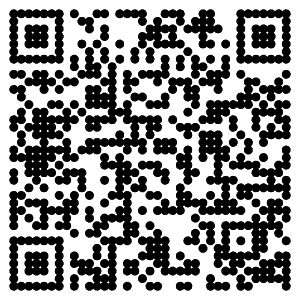Si-Bo Wang1,*, Kang-Ding Liu1,*, Yi Yang1,*, Ya-Jie Li2, Ming-Yi Hu3, Pan Lin4, Rong Guo5, Qian Tian6, Yong You7, Ying-Hua Cui8, Guan-Ling Zhang9, Zhao Dong10, Yong-Sheng Gao11 and Ying-Qi Xing1
Abstract
Background: The association between RLS and migraine is still debated. The aim of this study is to investigate the prevalence and grade of RLS in Chinese patients with migraine and to evaluate the relationship between RLS and migraine.
Methods: A multi-center case-control study of contrast-enhanced transcranial Doppler was conducted in 931 consecutive patients with migraine (240 of 931 had migraine with aura and 691 of 931 were in the migraine without aura group) and 282 were healthy adults. Clinical trial no. NCT02425696.
Results: The prevalence of RLS was 63.8% and 39.9% in the migraine with aura group (MAt) and migraine without aura group (MA ), respectively, significantly higher than that of the healthy group (29.4%, p<0.001; p<0.001). The positive rate of large RLS in the MAt group and MA group was 32.1% and 16.5%, respectively, significantly higher than healthy group (6.4%, p<0.001; p<0.001). There was no difference among groups in terms of positive rate of permanent RLS (p?0.704).
Conclusion: This multi-centre case-control study suggested that there is an association between RLS and migraine with and without aura, especially when the shunt is large.
Keywords
Right-to-left shunt, transcranial Doppler, patent foramen ovale, migraine
Date received: 15 January 2017; revised: 13 March 2017; accepted: 19 March 2017
Introduction
A right-to-left shunt (RLS) is an abnormal pathway between the venous and arterial circulations, and includes both intracardiac and extracardiac RLSs (1).
1 Intracardiac RLSs are usually related to patent foramen ovale (PFO) (2). Contrast-enhanced transcranial Doppler ultrasonography (c-TCD) is a clinically applicable and reproducible method of detecting RLSs, including both intracardiac and extracardiac RLSs.
Migraine is a common disabling neurovascular disorder. It has a high prevalence, 7.9% – 14% (3,4) in the western population and 9.3% in the Chinese population (5), and thus can be a great socioeconomic and personal burden. Moreover, about one-third of migraineurs have an occasional migraine with aura (MAt) (6). The pathogenesis of migraine is not well understood. Available data suggest that PFO is more common in patients with migraine, whereas other studies have reported that the prevalence of RLS is similar in patients with and without migraine (7,8).
The aim of the present study was to assess the prevalence and extent of RLS using c-TCD in Chinese patients with migraine (including migraine with and without aura) and compare them to the prevalence and extent of RLS in healthy controls. We then used these data to evaluate the relationship between RLS and migraine.
Methods
Study design
This multicentre case-control study on RLS in Chinese patients with migraine was performed from June 2015 to August 2016 in nine Chinese hospitals (see Appendix).
Study population
In this multicentre study, we enrolled consecutive participants with migraine aged 18 to 65 years. In total, 931 patients who fulfilled the criteria for migraine according to the International Classification of Headache Disorders III-beta (9) were included. A detailed clinical history was obtained from each patient via face-to-face interviews based on a questionnaire. Patients with migraine were divided into two groups: those without aura (MA ; 691 cases, 521 females, mean age: 40.98 10.90 years) and those with aura (MAt; 240 cases, 174 females, mean age: 40.63 11.25 years). Additionally, 282 healthy volunteers without a history of migraine were included as controls (199 females, mean age: 37.64 11.50 years). Subjects were excluded from the study if they had severe arterial stenosis, an insufficient temporal window, inadequate cubital venous access, and/or were unable to perform the Valsalva manoeuvre (VM) because of severe heart or lung disease. The ethics board at each hospital approved the study (clinical trial no. NCT 02425696; https://clinicaltrials.gov/ct2/archive/NCT02425696). All subjects gave informed consent to participate in the study.
TCD procedure
A baseline TCD examination was performed with a TCD detector(EMS-9A; Delica, China).We used a hand-held 2-MHz probe at the left middle cerebral artery (MCA) with the participant lying comfortably in the supine position. An 18-gauge catheter was placed in the right antecubital vein. The medium was prepared by hand by mixing 9mL of saline, 1mL of air, and a drop of the participant’s own blood (10). The medium was rapidly mixed back and forth 30 times between two 10-mL syringes that were connected by a three-way stopcock to create microbubbles (MBs). The procedure was performed three times: the first time during normal breathing and then two times during a 10 s VM that started 5 s after the initiation of medium injection (11). The patient was trained to inhale deeply and hold back expiration for 10 s, and then to release it to perform the VM; this corresponds to 15 s after the beginning of the medium injection (12). The highest single count of the number of MBs was taken as the estimate of shunt degree for each patient during two executions of a VM. The efficacy of the VM was identifiedby a reduction in the mean velocity in the MCA (13). RLS was diagnosed based on the presence of at least one MB during the 20 s c-TCD exam. An interval of at least 5 min from the last observed MB separated each test. An MB was defined sonically as a typical chirping sound, and visually by the presence of a spike-like form within the frequency spectrum and M-mode of the TCD detector. There are several different categorisation systems for RLSs (11,14–16). Based on the standards reported by Jauss et al. (11), Wessler et al. (14), and Xing et al. (16), we applied a five-level categorisation system according to the appearance of MBs in the TCD spectrum using unilateral MCA monitoring, as follows: grade 0?negative; grade I?1 MBs 10; grade II?10<MBs 25; grade III?>25 MBs and no curtain; and grade IV?curtain (where a single bubble cannot be identified) (Figure 1). We present the data for small (grade I), moderate (grade II), and large RLSs (grade III and grade IV). RLS was considered provoked if it occurred only after the VM and permanent if it also occurred during rest.


